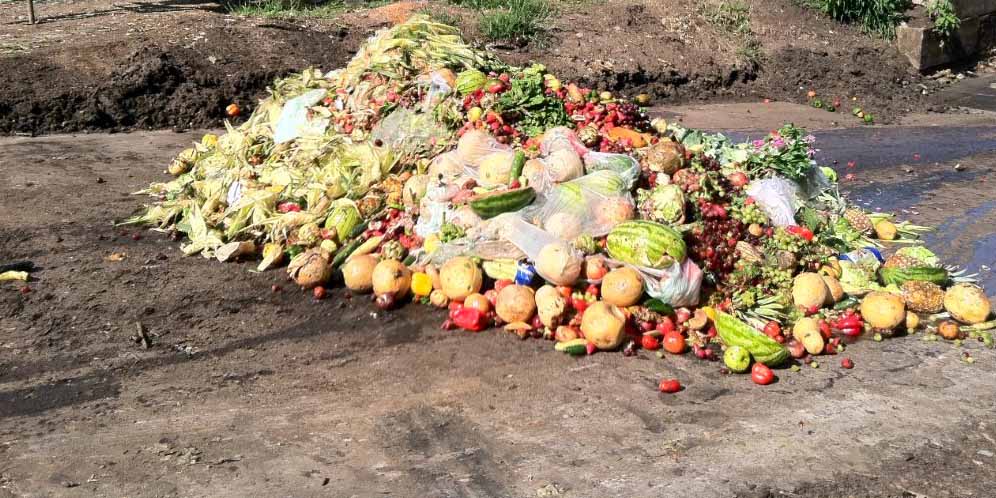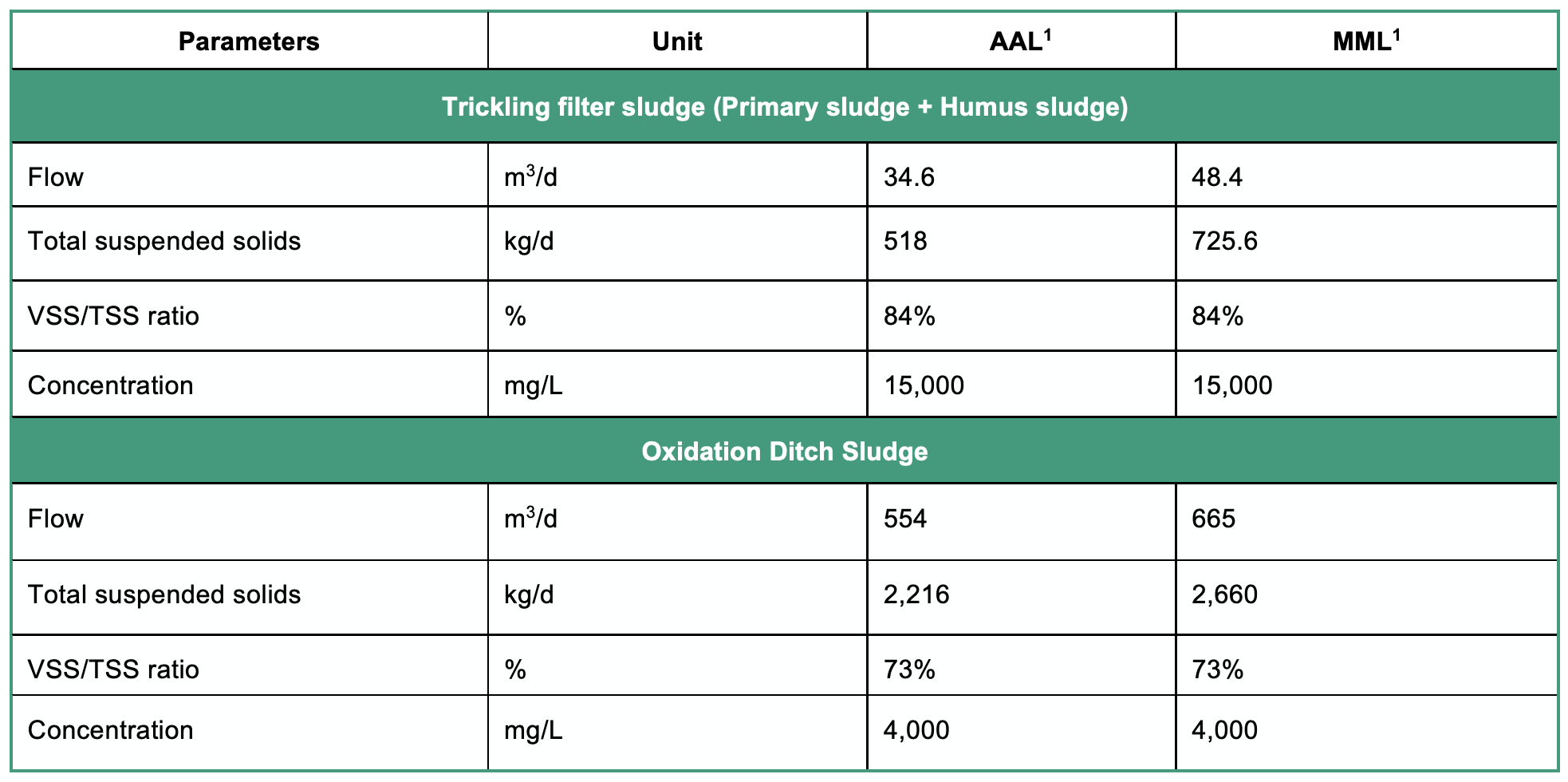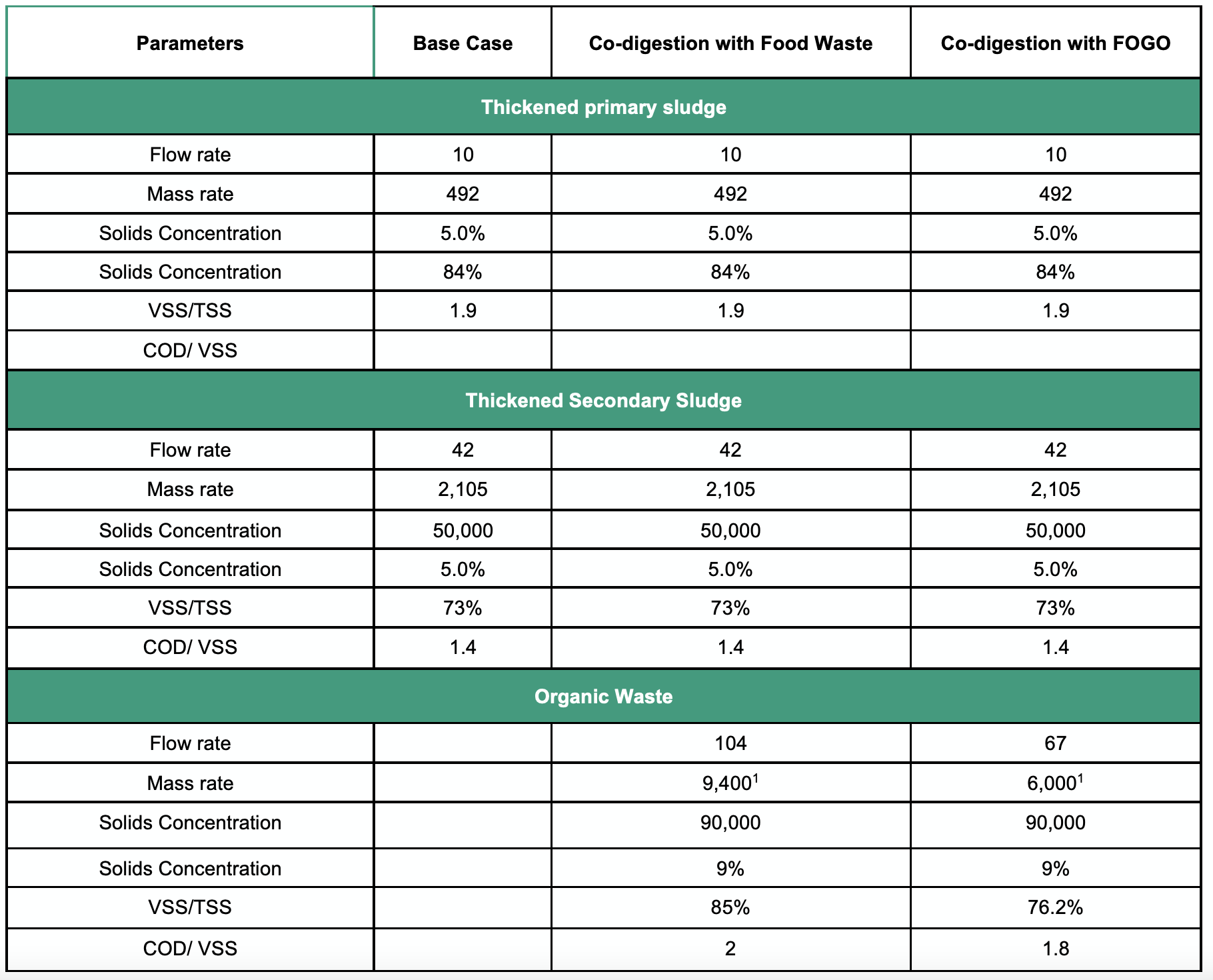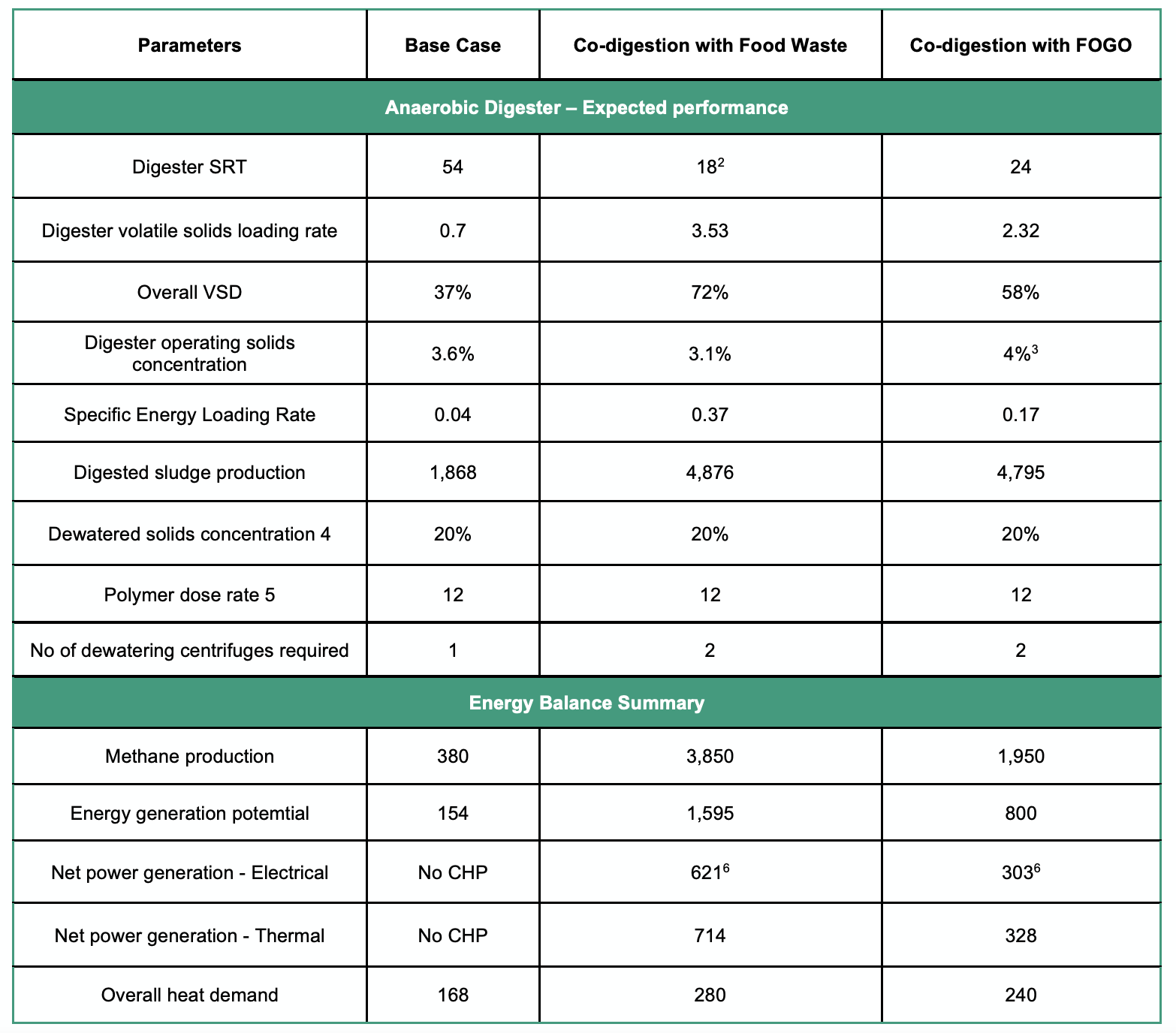Feasibility of waste to energy at Gladstone Wastewater Treatment Plant

First published in Water e-Journal Vol 5 No 2 2020.
Moving towards energy neutrality in the Gladstone Region.
DOWNLOAD THE PAPER
Abstract
Gladstone Regional Council (GRC) has recently developed a Biofutures Strategy for the Gladstone region. This strategy is in line with “Gladstone Region 2035 Vision” to achieve world-class environmental leadership to increase onsite energy recovery and move towards energy neutrality.
Anaerobic digestion is a commonly used sludge stabilisation process to produce stabilised grade B biosolids. It converts organic matter into biogas which can be used to generate electricity, and produce heat and digestate, a valuable fertiliser and soil conditioner.
The Gladstone Wastewater Treatment Plant’s (WWTP) solids handling facility, including anaerobic digester and dewatering, is currently undergoing augmentation. This is an opportunity for GRC to take an integrated approach and investigate the feasibility of co-digestion at the plant.
Co-digestion of organic waste with municipal sludge will increase the biogas generation significantly, potentially making Combined Heat and Power (CHP) economically viable.
The market assessment was conducted as a part of the Biofutures Strategy for various waste sources and the associated potential for energy generation and diverting waste away from landfill. Food waste, and Food Organic and Green Organic (FOGO) are considered potential sources for waste to energy.
GRC engaged Jacobs to investigate the viability of co-digestion at Gladstone WWTP. This paper discusses the impacts of different quality substrate on anaerobic digester performance, biogas production, biosolids production and the maximum substrate that can be added for co-digestion without compromising anaerobic digester performance.
A financial viability assessment was conducted for two different substrates to estimate the payback period. A sensitivity analysis was also conducted to assess the robustness of the outcomes of the investigation and to select a substrate for co-digestion that can provide maximum overall benefit in the long term.
Introduction
Gladstone Regional Council has recently developed a Biofutures Strategy for the Gladstone region. The strategy uncovered an opportunity for GRC to collaborate with Australian Gas Infrastructure Group (AGIG) to completely decarbonise the natural gas that is distributed.
The market assessment was conducted for various waste sources and its potential for energy generation for GRC. This assessment identified synergies between liquid/organic waste (Food Organic and Green Organic waste to energy) and municipal sludge to generate biogas and produce electricity.
One of the objectives of GRC under “Gladstone Region 2035 Vision” is to achieve “World Class Environmental Leadership.” Harvesting energy from the wastewater treatment plant and reducing the carbon footprint is a step towards achieving this goal.
The Gladstone Wastewater Treatment Plant’s (WWTP) solids handling facility, including anaerobic digester and dewatering, is currently undergoing an augmentation. The previous assessment suggested that Combined Heat and Power (CHP) is not financially viable at Gladstone WWTP, with biogas produced from sludge produced at Gladstone WWTP.
This is an opportunity for GRC to take a holistic approach and investigate co-digestion opportunities at Gladstone WWTP. Co-digestion of organic waste with municipal sludge will increase the biogas generation significantly potentially making CHP financially practical.
The current total Average Dry Weather Flow (ADWF) to the plant is approximately 6.6 MLD. The oxidation ditch receives approximately 78% of the total influent flow and load, and the remainder is treated by the trickling filter plant. These two processes produce two different sludge streams which vary in quality.
The trickling filter plant treatment process comprises of inlet works, two primary clarifiers, two trickling filters and two flat bottom humus tanks. The sludge from the humus tank is recycled back to the primary sedimentation tank and removed with the primary sludge.
The oxidation ditch plant comprises of inlet works, oxidation ditch with two surface aerators, followed by two secondary clarifiers. The mixed liquor from the oxidation ditch and scum from the secondary clarifiers is wasted to the sludge buffer tank.
Primary sludge from the trickling filter plant and secondary sludge from the oxidation ditch plant is mixed in the sludge buffer tank before being thickened using two rotary drum thickeners. The thickened sludge is then fed to the anaerobic digester for stabilisation. Digested sludge is then transferred to the dewatering feed tank before being dewatered using a dedicated dewatering centrifuge.
The biogas generated is sent to the boiler to generate hot water which is used to maintain mesophilic temperatures in the digester.
Methodology
The feasibility assessment of waste to energy at Gladstone WWTP was conducted in three steps:
- Develop feedstock characteristics
- Conduct process analysis to assess maximum quantity of feedstock that can be accepted by the existing anaerobic digester
- Assess financial viability of a co-digestion facility
Feedstock characteristics
The quantity of waste that can be processed by anaerobic digestion for co-digestion, as well as the sizing and selection of the pre-treatment system, is largely driven by the quality and characteristics of feedstocks accepted. The feedstock selected for this assessment, based on the GRC Biofutures Strategy, is municipal Food Organic and Green Organic (FOGO) and municipal food waste.
Waste characterisation of the feedstock was not conducted by GRC at the time of study, hence the quality of feedstock specific to GRC was not available at the time of this study. The quality of organic waste can be highly variable depending on the source, and composition may differ significantly from one location to another.
The characteristics of organic waste (FOGO and food waste) are variable and this has a significant impact on the quantity of organic waste that can be accepted for co-digestion. Typical parameters which are used in this assessment for FOGO and food waste digestion are summarised in Table 1.
The organic waste received for co-digestion will be collected through a kerbside collection process, hence it will be un-sorted and un-shredded in nature.

Table 1: Assumptions for food waste and FOGO composition and ultimate digestibility
1.Zhang R et.al (2007) / 2.Fitamo T et. al (2016) / 3.Typical values observed in literature with 50% food organic and 50% green organic
Biosolids production future

Notes: 1.AAL – Annual Average Load, MML – Maximum Monthly / 2.Fitamo T et. al (2016) / 3.Typical values observed in literature with 50% food organic and 50% green organice
Process analysis
Co-digestion of FOGO or food waste with sewage sludge is considered at Gladstone WWTP to maximise the use of spare capacity of the existing anaerobic digester to generate biogas and electricity.
The pre-treatment facility sizing took into consideration the feedstock characteristics and the maximum quantity of organic waste that can be processed by the existing anaerobic digestion facility.
The proposed process flow diagram for the co-digestion facility at Gladstone WWTP is as shown in Figure 1. The food waste / FOGO will be pre-treated, macerated, diluted and stored in a holding tank. It will then be transferred from the holding tank to the digester via a digester mixing system loop to ensure proper mixing of organic waste with digester content.

The biogas generated during the anaerobic process will be preferentially used to generate electricity and heat. If the CHP facility is unavailable, the biogas will be transferred to the boiler to generate hot water, and excess biogas will be flared.
It is envisaged that the organic waste collected at kerbside will be transferred to the Gladstone WWTP for co-digestion. Kerbside collected waste is typically highly contaminated and requires vigorous pre-treatment.
The pre-treatment facility selected includes debagging facility, maceration, removal of heavy metals and grit, and screening of macerated waste.
A dedicated building is proposed for all solid (dry) food waste handling, which will enable trucks to drive in, dump waste on the floor, and drive out. A front-end loader can be used to load a feed hopper to the processing unit.
The general arrangement proposed for the waste to energy work is as shown in Figure 2. It is envisaged that the existing maintenance shed will be converted into the organic waste receival facility.
An organic waste feed holding tank is provided with 48 hours of residence time to attenuate organic load to the anaerobic digester. Biogas storage is provided with a retention time of 4 hrs to attenuate biogas flow to the CHP facility.
The CHP facility is provided with biogas cleaning to reduce H2S, siloxanes and moisture concentration in the biogas, to achieve reliability in CHP operation.

Results / Outcome
A mass and energy balance model was developed for the co-digestion facility to assess the quantity of food waste and FOGO wastes that can be added to the existing anaerobic digester, and to assess its impact on the digested sludge production, biogas production, and energy recovery.
The quantity of organic waste added to the anaerobic digester will vary with the type of waste. Hence, the mass and energy balance modelling was conducted for the following options:
- Co-digestion with food waste
- Co-digestion with FOGO
The outcome of the mass and energy balance model for these two options is summarised in Table 3 and Table 4.


Notes:
1. Maximum organic waste added to the anaerobic digester for co-digestion
2. Digester SRT is limiting for food waste co-digestion
3. Digester operating solids concentration is limiting for FOGO co-digestion
4. Dewatered solids concentration for co-digestion option is assumed same as base case option
5. Polymer consumption for dewatering of co-digested sludge is assumed same as base case option
6. Electrical and thermal efficiency of 39% and 41% is adopted for IC engines
The mass and energy balance model illustrates that the existing digester has spare capacity. As summarised in Table 3 and Table 4, the quantity of FOGO that can be added for co-digestion is significantly less than the mass of food waste that can be added for co-digestion.
As summarised in Table 5, the biodegradability of FOGO (assumed 50% food waste and 50% green waste) is much lower than food waste alone. This is due to the lignocellulosic component in plant material which is difficult to degrade in the conventional mesophilic anaerobic digester.
The lower degradability of FOGO results in a higher digester operating solids concentration, subsequently limiting digester mixing capacity. The maximum digester operating solids concentration is limited at 4% as per the current digester mixing system design.
Co-digestion of food waste results in higher biogas production due to higher degradability and biomethane potential as compared to FOGO.
The addition of FOGO and food waste will result in an increase in biogas production from 380 m3/d (base case) to approximately 2,000 m3/d and 3,850 m3/d respectively. This would potentially result in electricity production of 2,128,119 kWh/yr for FOGO co-digestion and 4,357,420 kWh/yr for food waste co-digestion.
However, mass and energy balance model results predict that co-digestion will result in an increase in sludge production from 1,868 kg/d for the base case to approximately 4,876 kg/d for food waste and 4,795 kg/d FOGO, subsequently increasing the cost associated with dewatering and biosolids management.
The composition of FOGO and food waste has significant impact on the quantity of waste that can be added into the digester.
For example, food waste with a high protein fraction will result in a greater increase in ammonia concentration in the digester, which may result in inhibitory conditions to the anaerobic digestion process, limiting the quantity of food waste added for co-digestion.
Also, the lower degradable fraction of FOGO or food waste can limit the quantity of food waste added to the anaerobic digester, as it may result in an increase in the digester operating solids concentration beyond the capacity of the digester mixing system.
Feedstock sensitivity analysis
In the absence of the feedstock quality for FOGO and food waste, and acknowledging the potential variability of feedstock quality, a feedstock sensitivity assessment was conducted to assess its impact on the quantity of FOGO and food waste that can be treated by the existing 3.2 ML anaerobic digester.
The feedstock quality range adopted for sensitivity analysis is summarised in Table 5.

As summarised in Figure 3, the maximum quantity of FOGO and food waste that can be accepted for co-digestion will vary significantly depending on the feedstock characteristics. The quality of substrate also has an impact on the methane production, dewatered sludge production and centrate ammonia load.
This assessment is based on Case 2 and Case 5 which utilise the average quality of FOGO and food waste.

Capital and operating cost estimate
The capital and operating cost estimate has been developed for FOGO and food waste co-digestion options at Gladstone WWTP. The scope of work for the co-digestion options includes the following:
- Provision of new food waste/FOGO receival and pre-treatment facility
- Organic waste holding tank with mixing system and transfer pump
- Additional digester heat exchanger, and boiler facility
- New biogas storage, cleaning, combined heat and power facility, and biogas flare
- Additional dewatering centrifuge and dewatered sludge storage hopper

A simple payback period is estimated for each option by taking into account the annual O&M cost and estimating revenue generation in conjunction with the total capital cost.
The revenue generation for each option is estimated by multiplying tipping fees with the quantity of organic waste that can be treated under each option. A simple payback period for each option is summarised in Table 7.
As summarised in Table 7, the simple payback period for food waste is much lower than for the FOGO option due to the higher degradability and biomethane potential of the food waste as compared to FOGO.

Notes: 1.The organic waste tipping fee of $70/wet tonne of organic waste is adopted as it is the indicated waste levy in Queensland at the time of preparing this report.
Financial sensitivity analysis
A financial sensitivity analysis was performed to assess the robustness of the outcomes of the investigation. The sensitivity analysis was conducted for each option against key cost variables comprising:
- Electricity cost (0.15 – 0.18 $/kWh)
- Dewatered sludge haulage cost ($105 – 130 per wet tonne)
- Labour cost ($65 – $80 per hour)
- Organic waste tipping fee ($30 – $80 per wet tonne)
The outcome of the sensitivity analysis is summarised in Figure 4. The sensitivity analysis applied to the food waste and FOGO options indicates that food waste digestion has the lowest simple payback period under all scenarios.
The payback period for FOGO for scenario 1 is negative, meaning that there is no payback for the FOGO option under scenario 1 (this includes reduced organic waste tipping fees of $30/wet tonne).

Conclusion
Anaerobic digestion is a commonly used sludge stabilisation process to produce stabilised Grade B biosolids. The process converts degradable organic matter to biogas which can be used to generate electricity, and produce heat and digestate, a valuable fertiliser and soil conditioner.
Implementing co-digestion is gaining significant attention as it enables increased onsite electricity generation and the pathway towards energy neutrality.
There are number of co-digestion substrates available, including food waste, Fats Oil and Grease (FOG), Food Organics and Green Organics (FOGO), and high-strength liquid waste.
The Gladstone Wastewater Treatment Plant’s (GWWTP) solids handling facility, including anaerobic digester and dewatering, is currently undergoing augmentation. This is an opportunity for GRC to take an integrated approach and investigate the feasibility of co-digestion at the plant.
Co-digestion of organic waste with municipal sludge will increase the biogas generation significantly, potentially making Combined Heat and Power (CHP) economically viable.
As outlined in the above feasibility study, co-digestion of food waste alone would be preferable to the co-digestion of FOGO, as co-digestion of food waste results in higher biogas production due to higher degradability and biomethane potential as compared to FOGO at Gladstone WWTP.
Higher degradability of food waste than FOGO enables a greater quantity of food waste to be processed through the same digester volume, resulting in more revenue generation from food waste processing in the form of tipping fees.
The assessment also highlights that the viability of the scheme is sensitive to the biosolids haulage costs and tipping fees charged.
Acknowledgement
We would like to express our great appreciation to Anna Scott, General Manager Strategic Asset performance at GRC for sponsoring the project.
About the authors
Gokul Bharambe | Gokul is a Principal process engineer at Jacobs with experience in wastewater and biosolids treatment and chemical production industries. Gokul has been specialised in biosolids infrastructure planning, analysis, design and has completed high profile and important assignment for Public Utility Board (PUB), Melbourne Water, Sydney Water, Watercare, Unitywater and Queensland Urban Utility (QUU). Gokul has worked in various facets of process engineering, starting from process planning, process development, conceptual studies and detailed design of wastewater treatment plants and biosolids treatment facilities. Gokul is currently working as a Regional Technology lead – Residue and Resource Recovery for ANZ region.
References
Zhang, R., Hartman, K., Wang, F., Liu, G., Choate, C., Gamble, P.,2007. Characterization of food waste as feedstock for anaerobic digestion. Bioresour. Technol. 98, 929–935.
Fitamo, T., Boldrin, A., Boe, K., Angelidaki, I., 2016. Co-digestion of food and garden waste with mixed sludge from wastewater treatment in continuously stirred tank reactors. Bioresour. Technol. 206, 245 – 254.
